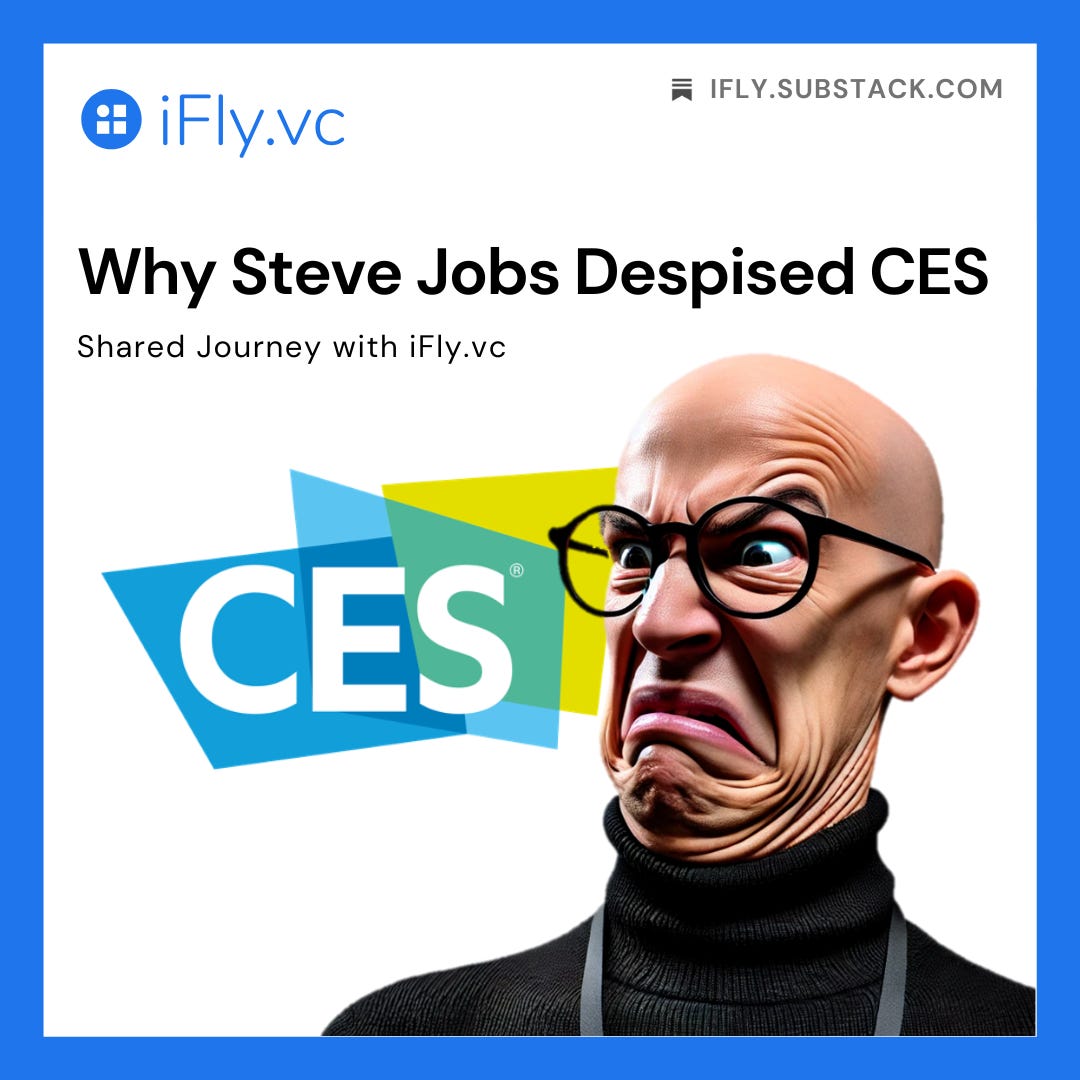I just returned from CES last week, where I witnessed incredible energy from startup founders hailing from all corners of the globe. It’s inspiring to see such optimism and ambition. Yet, statistically, most of these startups won’t make it far—a sobering reality that highlights how tough the entrepreneurial journey truly is.
Interestingly, last week also marked an important anniversary: January 9, 2007, the day Steve Jobs announced the first iPhone. It’s hard to believe it’s been 18 years since that moment, which fundamentally changed the way people live, work, and connect. The iPhone wasn’t just a product; it was a cultural shift—a perfect example of technology solving real-world problems with elegance and simplicity.
This juxtaposition between CES and Steve Jobs is worth reflecting on, especially for the founders I met at the show. Jobs famously despised CES and never participated during his tenure at Apple. But why? Understanding his reasoning offers invaluable lessons for entrepreneurs aiming to leave a lasting impact.
Why Steve Jobs Despised CES
Jobs’ disdain for CES stemmed not from a desire to discourage innovation, but from a belief that much of what the event represented fell short of meaningful innovation. While there isn’t a direct quote from Jobs about CES, his ethos was summed up in his broader philosophy. Jobs often expressed disdain for “tech for tech’s sake,” which aligns with his preference for products that solved real problems rather than showcasing technology that lacked user-centric purpose.
His reasons offer a high bar for founders to consider:
Lack of Focus on User Experience
Jobs felt CES was more about showing off technical specs than delivering transformative products. At Apple, the focus was always on creating seamless, user-friendly solutions that integrated hardware, software, and services. Impressive specs mean little without an exceptional user experience.
Apple’s Unique Marketing Philosophy
Unlike CES, which is crowded with competing brands, Jobs preferred controlled and exclusive product launches (e.g., Macworld, WWDC). This allowed Apple to control the narrative and ensure its innovations stood out. Think carefully about how and when to showcase products—context matters.
Avoiding Industry Conformity
CES often showcases “me-too” products—copycat versions of existing trends. Jobs was relentless about thinking differently and leading rather than following. Are these companies creating something truly original or just riding a wave?
Aversion to Overhype
Many CES announcements overhype technologies that are unfinished or impractical. Jobs only revealed products that were polished and ready to ship, ensuring they met consumer expectations. The goal is to deliver value, not just hype.
Focus on Consumer-First Innovation
Jobs criticized products at CES that prioritized flashy features over solving real problems. Apple succeeded by redefining categories like smartphones and tablets with thoughtful, consumer-first innovation. Products must aim to solve meaningful problems, not just showcase technology for technology’s sake.
Competing Against Mediocrity
Jobs reportedly found CES uninspiring because many exhibitors presented incremental upgrades or generic ideas. Apple’s strategy was to stand apart with iconic, category-defining products. Always think big and strive for excellence, even in crowded markets.
Lessons for Today’s Founders
Attending CES is a great reminder of the immense opportunities in the tech world—but also of the high bar that must be met to succeed. Steve Jobs’ vision wasn’t just about creating great products; it was about redefining how we think about innovation, marketing, and value creation.
For founders, this isn’t a call to abandon CES or other industry showcases but a challenge to rise above mediocrity. Let CES be a place where truly transformative ideas emerge—ideas that solve real problems, delight users, and stand the test of time.
As I reflect on the founders I met at CES, I hope their energy and ambition can be channeled into creating the next wave of life-changing innovations. After all, the world doesn’t need another gadget; it needs bold ideas and thoughtful execution.
Here’s the video of Steve Jobs introducing the first iPhone on January 9, 2007. Do you remember where you were when you first saw an iPhone? Or the first time you held one? More importantly, what ideas and innovations are you working on today that could inspire the next generation?
Let’s set the bar high.
Warm regards,
Han
More from iFly.vc









